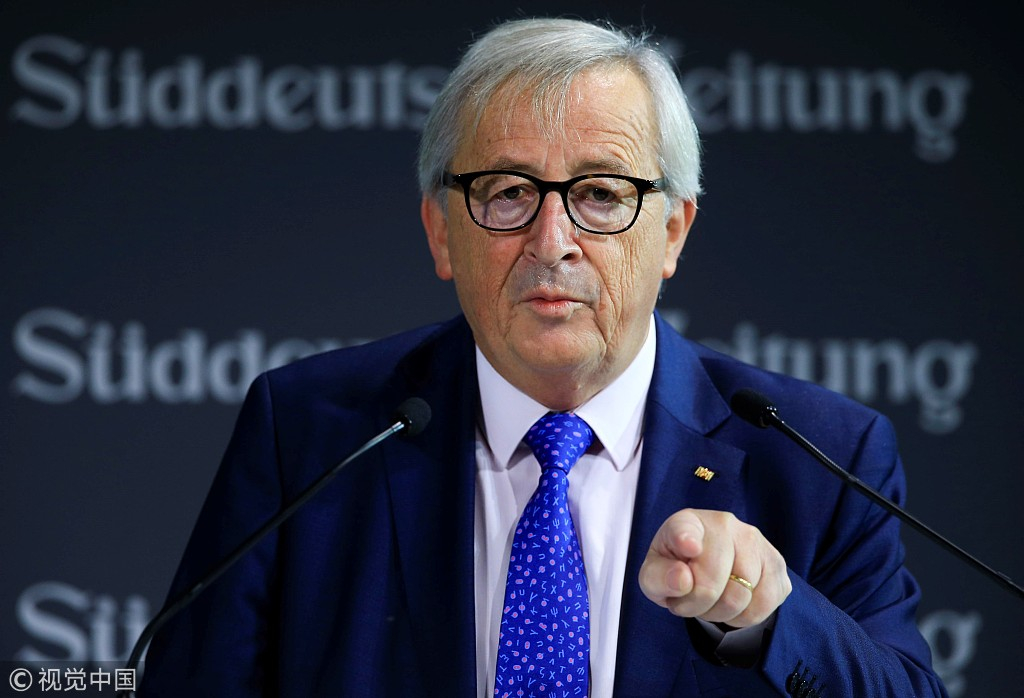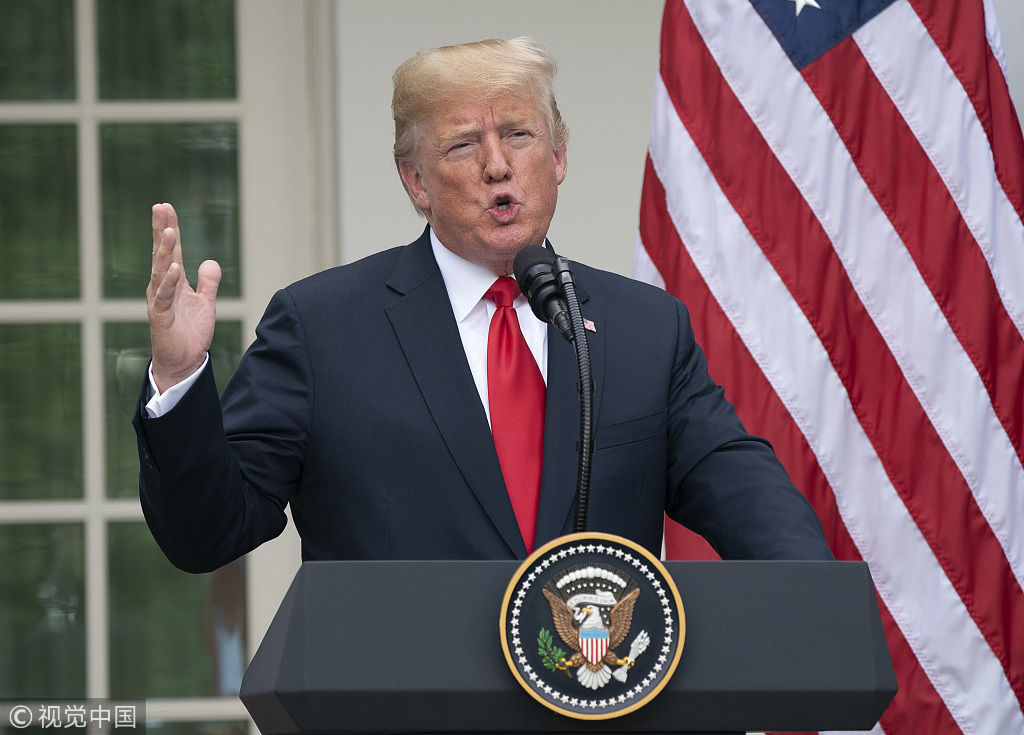
Opinion
16:07, 19-Feb-2019
Opinion: Will the EU be next to feel the sting of Trump’s tariff war?
Tracy Chen

Editor's note: Tracy Chen is an assistant research fellow from The School of International Development at UEA. The article reflects the author's views, and not necessarily those of CGTN.
On February 18, the U.S. Department of Commerce submitted a long-awaited report to U.S. President Donald Trump that may lead to the imposition of steep tariffs on U.S. imports of automobiles and automotive parts.
By the request of the U.S. President, the Department of Commerce initiated a "Section 232" investigation on imported vehicles and auto parts on May 23, 2018. Up till now, no details of the report were disclosed.
President Trump has 90 days to decide on whether he agrees with the recommendations of the report or not. The Center for Automotive Research estimated that if the Trump Administration decides to implement a 25 percent tariffs on U.S. imports of automobiles and automotive parts, American consumers will see a price rise of around 4,400 U.S. dollars per car sold in the country.
Since President Trump took office, the U.S. Administration's priority has been to reduce U.S. trade deficits. In 2017, 52 percent of vehicles sold in the United States were manufactured domestically and the other 48 percent were assembled abroad.
According to data from U.S. Commerce Department, America's trade deficit with the European Union (EU) on vehicles hovers around 40 billion U.S. dollars a year and President Donald Trump has long complained that the U.S. applies a 2.5 percent tariff on imported cars while Europe levies 10 percent. Analysts at Barclays predicts that the possible 25 percent tariffs on the European automotive sector will cause a lost output of around 75 billion U.S. dollars which will lead to a decrease of 0.4 percent growth rate in Eurozone.

EU Commission President Jean Claude Juncker speaks during an economic forum in Berlin, Germany, November 12, 2018. /VCG Photo
EU Commission President Jean Claude Juncker speaks during an economic forum in Berlin, Germany, November 12, 2018. /VCG Photo
Tariffs may provide short-term protection for U.S. domestic automobile industries, but it's not a long-term solution. U.S. automotive and automotive parts manufacturers will not benefit from the coming auto tariffs as the price rises will cause demand to fall and the Center for Automotive Research estimated that, with the potential 25 percent levy, there will be nearly 750,000 people who will lose their jobs in the related sectors, causing a loss of 62.2 billion U.S. dollars.
To implement an assertive trade policy, the United States has been wielding “national security” as an excuse to erect barriers on imports to protect critical industries. A similar process occurred in 2017. For the same “national security” purposes, President Trump instructed the U.S. Department of Commerce to launch investigations under "Section 232" into the potential threat imports of steel and aluminum posed to U.S. national security.
The reports underlined that the steel and aluminum industries were harmed by China's over-capacity. The logic behind these moves to protect national security should be the same restriction to all foreign suppliers. However, the administration of the Republic of Korea (ROK) received a permanent exemption from the steel tariffs. In return, Seoul consented to quotas on its steel exports to the United States.
Moreover, American automakers were allowed to ship 50,000 cars to the ROK, on U.S. safety standards instead of meeting Korean standards. The United States also negotiated to have quantitative limits on its exports with Australia and Brazil. Canada, Mexico, and the EU were exempted until May 1, 2018.
When the U.S. steel and aluminum tariffs went into effect, the EU imposed tariffs on about 3.2 billion U.S. dollars' worth of American exports. Also, Canada initiated tariffs on U.S. products of around 12.8 billion U.S. dollars.

U.S. President Donald Trump makes a joint statement on trade with Jean-Claude Juncker, President of the European Commission at The White House in Washington D.C., July 25, 2018. /VCG Photo
U.S. President Donald Trump makes a joint statement on trade with Jean-Claude Juncker, President of the European Commission at The White House in Washington D.C., July 25, 2018. /VCG Photo
Since the end of the Obama administration, the U.S. and the EU never finished negotiating the Trans-Atlantic Trade and Investment Partnership (TTIP). The Trump administration has pushed to include agriculture in the scope of any agreement but the EU insisted that agriculture is not part of the trade negotiations with the United States.
The two parties have disagreements on issues such as protection of geographic indications, EU's restrictive measures on genetically modified agricultural products and agricultural subsidies. Up till now, TTIP negotiators haven't been able to come to terms on these issues, and once again, the U.S. administration is using auto tariffs as a threat to build leverage - will the EU insist on negotiating without threats?
In the United States, the automobile industries but also agricultural sectors are concerned that prospective "Section 232" tariffs may present a threat to their exports. The likely retaliatory tariffs from the EU will lead to higher production costs which may price some American vehicles out of other markets and also will certainly make it harder for U.S. agriculture products to enter the EU market.
(If you want to contribute and have specific expertise, contact us opinions@cgtn.com)

SITEMAP
Copyright © 2018 CGTN. Beijing ICP prepared NO.16065310-3
Copyright © 2018 CGTN. Beijing ICP prepared NO.16065310-3